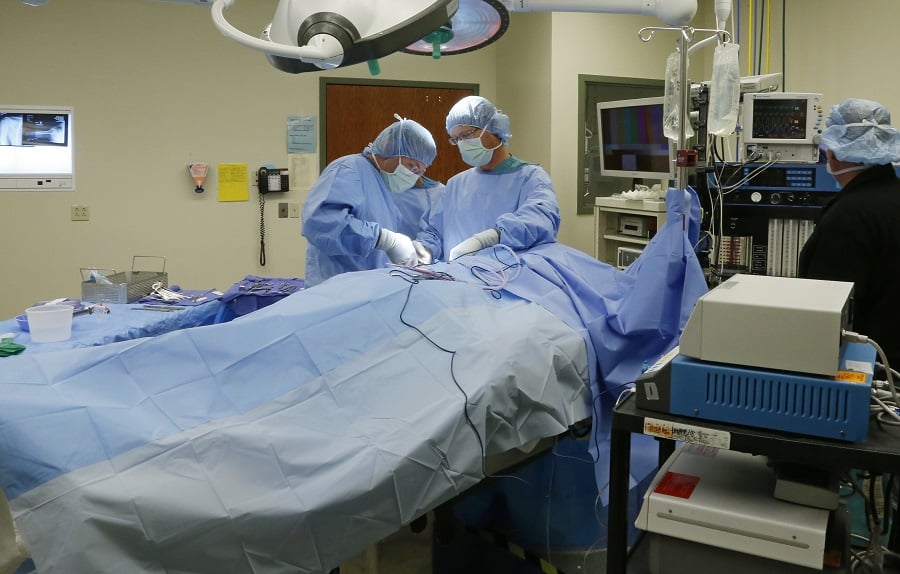 Estimatessuggest that 2.9 million surgical patients become persistent opioidusers each year.
Estimatessuggest that 2.9 million surgical patients become persistent opioidusers each year.
The opioid crisis was of significant concern before COVID-19 andit's only been exacerbated by the pandemic. The resulting healthand economic consequences of coronavirus have added another layerof stress, anxiety, fear and worry about job security to mostpeople's lives. According to the Centers for Disease Control and Prevention,this environment is especially challenging for high-riskindividuals including drug users and those undergoing treatment aswell as those with depression, living alone or havingpersonal/marital issues. The void of connection, isolation andlimited access to drug treatment and recovery programs has resultedin a surge of substance abuse and opioid overdoses.
|Related: Employers spend $2.6 billion annually on care foropioid addiction
|Although we are likely not near the end of this pandemic, stateshave begun their reopening process. As a result, many Americans arebeginning to schedule elective surgeries that were largelypostponed or stopped because of COVID-19. Centers for Medicare& Medicaid Services has provided recommendations on how states that meet certaincriteria can begin re-instituting elective surgeries. The WhiteHouse's plan for Opening Up America Again includes resuming outpatientelective surgeries as a Phase One priority and inpatient electiveprocedures are to resume in Phase Two.
|This wave of non-emergent surgeries will likely have anunfavorable impact on the opioid crisis in the U.S. as manypatients will require post-surgery pain relief which can increasethe risk of dependence and exposure to these highly addictivedrugs. Unused opioid pills also create increased risk. Each year,more than 1 billion unused pills are made available and90% of unused pills remain in the home in unsecuredlocations. Thirty-two percent (32%) of all opioid addicts reporttheir first opioid exposure was through leftover pills.
|Estimates suggest that 2.9 million surgical patients become persistentopioid users each year. This creates significant costs foremployers. The use of postoperative opioids is associated withhigher direct health care costs, greater use of medical servicesand increased length of stay and readmissions due to opioid-relatedadverse events. When opioids are prescribed post-surgery, theaverage additional cost per patient is $5,100to $7,000.
|The first 72 hours following surgery, when pain is most severeand inflammation is highest, are critical in successfully treatingpostoperative pain. Opioids are frequently prescribed to reducethis pain and discomfort.
|Today, most employers do not realize that non-opioidpostoperative pain management alternatives are available, alongwith new innovative treatments currently in development. In fact,Medicare has taken the lead on making certain these non-opioidalternatives are reimbursed separately from provider surgicalbundles that rely on opioids because they are inexpensive. Thisremoves the cost burden to providers that would otherwisediscourage their use.
|The Midwest Business Group on Health recommends employers followMedicare's lead and ensure covered populations have similar access.In the surgical setting, here are steps employers can take to mitigateone of the key entry points to opioid addiction:
- Incent providers to use non-opioid pain managementalternatives
- Direct members to facilities/providers that utilize innovativenon-opioid postoperative pain management treatments
- Educate care managers, employees and their families, to narrowthe pathway to addiction
- Deploy value-based benefit design strategies to help patientsavoid unnecessary surgeries in the first place
The challenges of COVID-19 are not going away anytime soon, butthat doesn't render employers helpless in pushing back onescalating health care costs associated with the overuse ofopioids. Employers should work with their carrier/third-partyadministrator to change their reimbursement strategy and ensureinnovative non-opioid postoperative pain management alternativesare readily accessible.
|Acting today can save lives tomorrow by impacting unnecessaryopioid exposure, improving the time it takes to return-to-work andreducing total health care spend.
|Dawn Weddle is director of memberengagement at Midwest Business Group on Health.
Read more:
Complete your profile to continue reading and get FREE access to BenefitsPRO, part of your ALM digital membership.
Your access to unlimited BenefitsPRO content isn’t changing.
Once you are an ALM digital member, you’ll receive:
- Critical BenefitsPRO information including cutting edge post-reform success strategies, access to educational webcasts and videos, resources from industry leaders, and informative Newsletters.
- Exclusive discounts on ALM, BenefitsPRO magazine and BenefitsPRO.com events
- Access to other award-winning ALM websites including ThinkAdvisor.com and Law.com
Already have an account? Sign In
© 2024 ALM Global, LLC, All Rights Reserved. Request academic re-use from www.copyright.com. All other uses, submit a request to [email protected]. For more information visit Asset & Logo Licensing.








